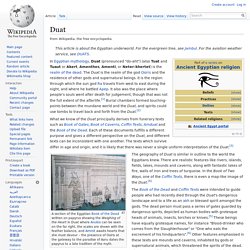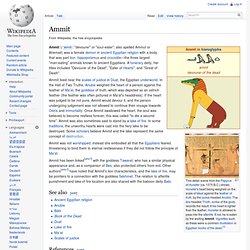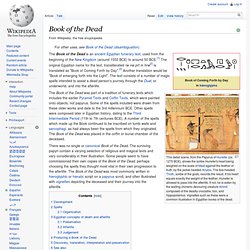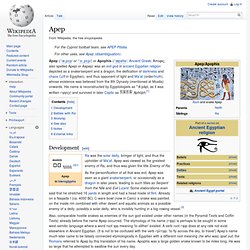

Duat. This article is about the Egyptian underworld.

For the evergreen tree, see Jambul. For the aviation weather service, see DUATS. In Egyptian mythology, Duat (pronounced "do-aht") (also Tuat and Tuaut or Akert, Amenthes, Amenti, or Neter-khertet) is the realm of the dead. The Duat is the realm of the god Osiris and the residence of other gods and supernatural beings. It is the region through which the sun god Ra travels from west to east during the night, and where he battled Apep. What we know of the Duat principally derives from funerary texts such as Book of Gates, Book of Caverns, Coffin Texts, Amduat and the Book of the Dead. A section of the Egyptian Book of the Dead written on papyrus showing the Weighing of the Heart in Duat where Anubis can be seen on the far right, the scales are shown with the feather balance, and Ammit awaits hearts that she must devour – the presence of Osiris at the gateway to the paradise of Aaru dates the papyrus to a late tradition of the myth.
References.
Ammit. Ammit (/ˈæmɨt/; "devourer" or "soul-eater"; also spelled Ammut or Ahemait) was a female demon in ancient Egyptian religion with a body that was part lion, hippopotamus and crocodile—the three largest "man-eating" animals known to ancient Egyptians.

A funerary deity, her titles included "Devourer of the Dead", "Eater of Hearts", and "Great of Death". Ammit lived near the scales of justice in Duat, the Egyptian underworld. In the Hall of Two Truths, Anubis weighed the heart of a person against the feather of Ma'at, the goddess of truth, which was depicted as an ostrich feather (the feather was often pictured in Ma'at's headdress).
If the heart was judged to be not pure, Ammit would devour it, and the person undergoing judgement was not allowed to continue their voyage towards Osiris and immortality. Once Ammit swallowed the heart, the soul was believed to become restless forever; this was called "to die a second time". See also[edit] References[edit] Book of the Dead. This detail scene, from the Papyrus of Hunefer (ca. 1275 BCE), shows the scribe Hunefer's heart being weighed on the scale of Maat against the feather of truth, by the jackal-headed Anubis.

The ibis-headed Thoth, scribe of the gods, records the result. If his heart equals exactly the weight of the feather, Hunefer is allowed to pass into the afterlife. If not, he is eaten by the waiting chimeric devouring creature Ammit composed of the deadly crocodile, lion, and hippopotamus. Vignettes such as these were a common illustration in Egyptian books of the dead.
The Book of the Dead is an ancient Egyptian funerary text, used from the beginning of the New Kingdom (around 1550 BCE) to around 50 BCE.[1] The original Egyptian name for the text, transliterated rw nw prt m hrw[2] is translated as "Book of Coming Forth by Day".[3] Another translation would be "Book of emerging forth into the Light". Development[edit] Apep. Development[edit] Ra was the solar deity, bringer of light, and thus the upholder of Ma'at.

Apep was viewed as the greatest enemy of Ra, and thus was given the title Enemy of Ra. Also, comparable hostile snakes as enemies of the sun god existed under other names (in the Pyramid Texts and Coffin Texts) already before the name Apep occurred. The etymology of his name (ꜥꜣpp) is perhaps to be sought in some west-semitic language where a word root ꜣpp meaning 'to slither' existed. A verb root ꜥꜣpp does at any rate not exist elsewhere in Ancient Egyptian. Battles with Ra[edit] Set speared Apep The sun god Ra, in the form of Great Cat, slays the snake Apep[5] Tales of Apep's battles against Ra were elaborated during the New Kingdom.[6] Since everyone can see that the sun is not attacked by a giant snake during the day, every day, storytellers said that Apep must lie just below the horizon.
In a bid to explain certain natural phenomena it was said that occasionally Apep got the upper hand.